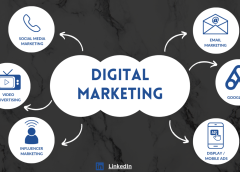In today’s digital age, businesses are constantly seeking innovative solutions to streamline operations, enhance efficiency, and stay ahead of the competition. One technology that has revolutionized the way organizations operate is cloud computing. From startups to multinational corporations, cloud computing has become an indispensable tool for driving growth and innovation.
How Geo Restriction in CloudFront Enhances Performance and Security
One of the key benefits of cloud computing is its ability to deliver content quickly and securely to users around the world. Amazon CloudFront, a content delivery network (CDN) offered by Amazon Web Services (AWS), plays a crucial role in this process. With Geo Restriction capabilities, CloudFront allows businesses to control access to their content based on the geographic location of the viewer.
Geo Restriction in CloudFront is helpful in several ways. Firstly, it enables businesses to comply with content distribution regulations and licensing agreements specific to certain regions. By restricting access to content based on geography, businesses can ensure that their digital assets are only accessed by authorized users in approved locations.
Furthermore, Geo Restriction helps improve the performance of content delivery by directing users to the nearest edge location, thereby reducing latency and improving load times. This ensures a seamless and responsive user experience, regardless of the user’s location.
Exploring the Phases of Cloud Architecture
Cloud architecture encompasses a series of phases that organizations undergo when adopting cloud technology. These phases typically include:
- Assessment and Planning: In this phase, businesses assess their existing IT infrastructure, identify workloads suitable for migration to the cloud, and develop a comprehensive migration strategy. Factors such as cost, security, and compliance are carefully evaluated during this stage.
- Migration and Deployment: Once the migration strategy is in place, organizations begin the process of moving their applications, data, and workloads to the cloud. This involves selecting the appropriate cloud service provider, configuring the necessary infrastructure, and executing the migration plan in a phased manner to minimize disruption to business operations.
- Optimization and Management: After migrating to the cloud, organizations focus on optimizing their cloud resources for performance, scalability, and cost-efficiency. This may involve fine-tuning configurations, implementing automation tools, and monitoring resource utilization to ensure optimal performance and cost-effectiveness.
- Continuous Improvement: Cloud architecture is an iterative process, and organizations must continuously assess their cloud environment, identify areas for improvement, and implement enhancements to address evolving business needs and technological advancements.
Bridging the Gap: Traditional Data Centers vs. the Cloud
While traditional data centers have long been the backbone of enterprise IT infrastructure, the rise of cloud computing has introduced a paradigm shift in the way businesses approach technology infrastructure. Here are some key differences between traditional data centers and the cloud:
- Scalability and Flexibility: Traditional data centers typically require significant upfront investment in hardware and infrastructure, making it challenging to scale resources on demand. In contrast, the cloud offers virtually unlimited scalability, allowing businesses to quickly provision and de-provision resources based on fluctuating demand.
- Cost Structure: Traditional data centers incur substantial capital expenditures for hardware procurement, maintenance, and upgrades. Cloud computing, on the other hand, operates on a pay-as-you-go model, where businesses only pay for the resources they consume, leading to cost savings and greater cost predictability.
- Resilience and Reliability: Cloud providers offer robust infrastructure with redundant systems and data replication across multiple geographically dispersed data centers, ensuring high availability and data durability. Traditional data centers may lack the redundancy and fault tolerance capabilities of cloud environments.
Embracing Innovation with Cloud-Native Technologies
As businesses continue to embrace cloud computing, there has been a growing focus on leveraging cloud-native technologies to drive innovation and agility. Cloud-native applications are designed and optimized for deployment in cloud environments, utilizing containerization, microservices architecture, and DevOps practices to deliver scalable, resilient, and portable solutions.
Containerization platforms such as Docker and Kubernetes have become essential tools for building and managing cloud-native applications. Containers allow developers to package their applications and dependencies into lightweight, portable units, enabling seamless deployment across different cloud environments and ensuring consistency in development, testing, and production environments.
Microservices architecture is another key aspect of cloud-native development, enabling applications to be broken down into smaller, independently deployable services. This modular approach allows organizations to iterate and innovate more rapidly, as changes to one service do not require updates to the entire application stack. Additionally, microservices promote scalability and fault isolation, enhancing the overall resilience of cloud-native applications.
DevOps practices play a crucial role in accelerating the delivery of cloud-native applications, fostering collaboration between development and operations teams and promoting automation throughout the software development lifecycle. Continuous integration and continuous deployment (CI/CD) pipelines enable organizations to automate the build, test, and deployment processes, ensuring faster time-to-market and improved quality of software releases.
Security and Compliance in the Cloud Era
With the increasing adoption of cloud computing, security and compliance have become top priorities for organizations migrating to the cloud. Cloud providers invest heavily in robust security measures and compliance certifications to ensure the confidentiality, integrity, and availability of customer data.
Encryption, identity and access management (IAM), and network security are fundamental components of cloud security, protecting data both at rest and in transit and controlling access to cloud resources based on user roles and permissions. Additionally, cloud providers offer a wide range of compliance certifications, such as SOC 2, ISO 27001, and GDPR, to meet the regulatory requirements of various industries and geographies.
In conclusion, cloud computing has emerged as a game-changer for businesses looking to innovate, scale, and stay competitive in today’s digital landscape. From Geo Restriction capabilities to the different phases of cloud architecture and the contrast with traditional data centers, embracing cloud technology offers a myriad of benefits for organizations seeking to thrive in the digital era.






